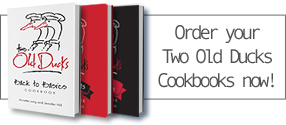Community Kitchen Welcomes our Gardening Guru back to the mic for another year of sharing gardening tips, ideas and encouragement. Australia has seen drought, bush fires, flooding and threat of cyclone in the last 3 months. What does this do to the farmers, the food costs and destruction of crop?
We can no doubt expect to see a rise in fresh food prices, whether its our beef and lamb because our farmers were so affected by drought and we know how lack of water has such an ongoing effect. We now face the flooding of crops and Gary so rightly mentioned that not only does the water effect the crops but also the inability to work on the fields and harvest or pick is just another hurdle.
Is our disconnection to farming and growing foods creating a short sight into what to expect with food prices?
Do the big chain supermarkets really feel the effort when most farmers contract supply at a set price?
Are we aware that smoke haze affects pollination?
Vineyards and two days of smoke haze don’t create a happy crop?
Sometimes I think its worthwhile to put ourselves in the farmers shoes and walk the miles, think of the potatoes in the sodden ground, the lettuces drenched and the snails approaching, the cabbage moth hovering looking for a home and the humidity sucking all the goodness out of the cucumbers and squash.
Gary thinks we have to think outside the box and change our plants to suit the climate, maybe adding Brazilian spinach, gourds and loofas for a more hardy crop when we face such extreme weather conditions.
BUT in saying that he has shared a step by step GETTING STARTED guide for a 1 metre share area, low cost and NO dig.
YOU NEED for 1 metre square garden
- 2 bags of mushroom compost
- 2 dozen dried egg shells
- 1 kilo coffee grinds
- 2 cups of wood ash
- 1 bale of rough sugar cane mulch
- cardboard or newspaper (no glossy pages)
- Sprinkle the egg shells (for calcium)
- Spread the coffee grinds (for slow release nitrogen and ph neutral)
- Spread the wood ash (or pot ash)
- Cover the area with a thick mat of newspapers and cardboard that has been soaked or dampened – be generous
- Repeat the process
- Cover with mushroom compost
- Cover with minimum of 2 biscuits of mulch – make sure its well covered to keep in moisture
- Walk all over and pack it down to get all the lumps out
- Use a paddle pop stick or wooden disposable utensil to test the moisture level – leave it in the bed and check to make sure there is moisture content otherwise hose in the early morning or late afternoon
- You can then plant in your healthy seedlings
https://www.kookaburraorganics.com/ Gary provides a wealth of knowledge thru his work shops and joins me each month- 2nd Tuesday @ 10 am on Community Kitchen

